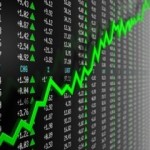 Well, firstly, the news is much less bad than it was, despite the gloomy prognostications in the media (bad news and drama sell newspapers and garner viewers, but emotion makes for poor investment decisions.)
Well, firstly, the news is much less bad than it was, despite the gloomy prognostications in the media (bad news and drama sell newspapers and garner viewers, but emotion makes for poor investment decisions.)
In the United States, even with the threat of the fiscal cliff, growth is OK. Not a boom, but also far from a recession. Unemployment is declining, employment growth is occurring—slowly. The housing sector is recovering. And Ben Bernanke, the head of the US Federal Reserve Bank (the “Fed”) , has just announced that the liquidity injections into the US economy (“quantitative easing”) will be doubled next year, and will continue as long as it takes for the unemployment rate to reach 6.5% or below. This extra liquidity will help drive the US dollar lower, forcing other countries to respond by introducing their own monetary stimulus or face an appreciating exchange rate, which tends to slow growth. While the risk of the “fiscal cliff” (a sharp automatic rise in taxes and cut in spending) remains, Republicans know that the Democrats need do nothing to achieve their goal of higher tax rates for the rich, since the Bush tax cuts will automatically expire unless renewed. For once, it is the Republicans who will be obliged to compromise, and it seems likely that they will. Neither side wants to be blamed for an economic crunch.
In the beginning, and for too long after that, Europe fumbled its response to their crisis. Every step taken to resolve first the Greek and then the Spanish etc., debt crises was too little too late, while the ECB (European Central Bank) actually inexplicably tightened monetary policy (in the middle of a debt deflation!) worsening the European downturn. The obvious failure of these policies has led to a rethink, and Europe has now also embraced the idea of stimulating liquidity via “quantitative easing” on the lines of the “Fed”. Tentative signs are that the European economy has at last stopped falling. Recovery will be slow, but at least that is an improvement over the sharp declines, especially in the periphery, which had been the pattern previously.
And in China, growth appears to have bottomed, and even though the new leadership is not targeting the high growth of previous years, they are still aiming for GDP growth of 7% or better, and have the fiscal and monetary levers to get their way.
But it’s not just improved growth and turning economies. It’s also falling risk. For example, the Greek government bond yield has fallen from 34% a year ago to 14% now, Spanish and Italian bond yields have also halved. The ECB has changed its policy so that it will take whatever steps are necessary (in Draghi’s very words) to prevent the collapse of Spain, Italy, Portugal and Greece and the breakup of the Euro. In other words, if bond yields rise, the ECB will buy the bonds (with newly “printed” money) and drive their yields down again. Which means that, if the crisis worsens, the ECB will intervene and drive yields down. And if on the other hand, things improve, the markets will drive yields down. Either way, the risk of a runaway sell-off in bonds triggering a default has vanished. So risks have fallen markedly, and if there’s one thing share markets hate, it’s risk.
Meanwhile in Australia, the Reserve Bank appears to have acknowledged that there is a higher risk than they heretofore believed that the Australian economy could go into recession as the mining boom slows, especially with the A$ as high as it is. They have made it clear that they will if necessary cut the cash rate again to prevent this eventuality. The previous worry that benign neglect could inadvertently trigger a slowdown has very much diminished.
Finally, with the worldwide collapse in bond yields, the dividend yield on shares (4.4%, or around 5.5% with franking credits) is now much higher than both the cash rate (3%) and the bond yield (3.25%.) If we aren’t going to have a recession (and we aren’t) shares are very good value.
It has been 5 years since the GFC began. And it could take at least another 5 years before the All Ordinaries index reaches the high of 6780 it achieved at the end of 2007. But that still means that, from here (the index is 4592), shares could return a good 10% per annum, if you count both capital gains and dividends with their attached franking credits. Not bad, when the alternatives are so much lower.
Good paper but when I printed it the print size was very small and hard to read ??